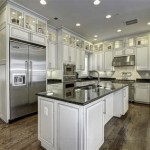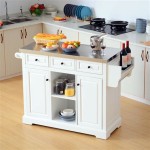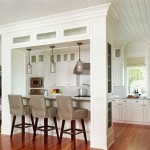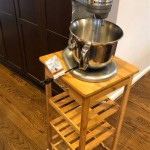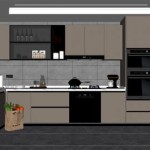Here's an article focusing on kitchen door pulls and handles, formatted as requested:
Kitchen Door Pulls and Handles: A Comprehensive Guide
Kitchen door pulls and handles are more than mere functional hardware components. They are integral design elements that contribute significantly to the overall aesthetic and usability of a kitchen space. Selecting the appropriate pulls and handles requires careful consideration of style, material, size, finish, and ergonomics. This article provides a detailed overview of the factors to consider when choosing kitchen door pulls and handles, offering insights into the various options available and their impact on kitchen design.
The primary function of a kitchen door pull or handle is to provide a secure and comfortable grip for opening and closing cabinet doors and drawers. However, their aesthetic role is equally important. They can complement existing design features, introduce new stylistic elements, and even serve as focal points, drawing the eye and adding visual interest to the cabinetry. Therefore, a well-chosen pull or handle seamlessly integrates with the kitchen's overall design scheme, enhancing both its functionality and its visual appeal.
The range of options available in kitchen door pulls and handles is vast, encompassing various styles from traditional to contemporary and materials ranging from stainless steel to ceramic. Understanding these options and their associated characteristics is essential for making informed decisions that align with the desired kitchen aesthetic and functional requirements.
Style Considerations: Matching Hardware to Kitchen Design
The style of kitchen door pulls and handles should harmonize with the overall design theme of the kitchen. Consider the following frequently encountered kitchen styles and the hardware that typically complements them:
Traditional Kitchens: Traditional kitchens often feature ornate details, raised-panel cabinet doors, and rich wood finishes. Suitable hardware options for traditional kitchens include antique brass pulls, oil-rubbed bronze knobs, and decorative wrought iron handles. These options typically feature intricate detailing and a warm, inviting aesthetic that complements the traditional style.
Contemporary Kitchens: Contemporary kitchens are characterized by clean lines, minimalist designs, and a focus on functionality. Sleek stainless steel bar pulls, minimalist chrome knobs, and integrated cabinet hardware are popular choices for contemporary kitchens. These hardware options offer a streamlined and modern look that aligns with the contemporary design aesthetic.
Transitional Kitchens: Transitional kitchens blend elements of both traditional and contemporary styles, creating a balanced and versatile design. Suitable hardware options for transitional kitchens include brushed nickel pulls, satin brass knobs, and simple yet elegant handle designs. These provide a bridge between the two styles, offering a sophisticated and timeless look.
Modern Farmhouse Kitchens: Modern farmhouse kitchens blend rustic charm with modern convenience and practicality. Black iron cup pulls, rustic bronze knobs, and simple shaker-style handles are often seen in this style. These hardware options often have a slightly aged or distressed finish that enhances the rustic aesthetic.
Beyond these general style guidelines, personal preferences and the specific design details of the kitchen should be considered. For example, a kitchen with a coastal theme might benefit from hardware with a nautical influence, such as pulls with rope detailing or knobs shaped like seashells.
Material Selection: Durability and Aesthetic Impact
The material of kitchen door pulls and handles significantly affects their durability, appearance, and maintenance requirements. Common materials include:
Stainless Steel: Stainless steel is a popular choice for kitchen hardware due to its durability, corrosion resistance, and sleek, modern appearance. It is easy to clean and maintain and complements a wide range of kitchen styles. Stainless steel is particularly well-suited for contemporary and transitional kitchens.
Brass: Brass offers a warm, classic look that is well-suited for traditional and transitional kitchens. It is durable, long-lasting, and can be polished to maintain its shine. Over time, brass can develop a patina, which adds character and depth to its appearance. Antique brass finishes provide a more aged and rustic look from the start.
Bronze: Bronze is similar to brass but typically has a darker, richer color. It is a durable material that is often used in traditional and modern farmhouse kitchens. Oil-rubbed bronze finishes provide a textured, matte look that complements rustic design elements.
Chrome: Chrome is a shiny, reflective material that is often used in contemporary kitchens. It is durable and easy to clean but can be prone to fingerprints. Chrome finishes offer a bright and modern look that complements minimalist design aesthetics.
Ceramic: Ceramic knobs and pulls offer a decorative and colorful alternative to metal hardware. They are available in a wide range of shapes, sizes, and colors, and can be used to add a touch of personality to any kitchen. Ceramic hardware is often used in traditional and eclectic kitchens.
Glass: Glass knobs and pulls offer a sophisticated and elegant look that complements traditional and transitional kitchens. They are available in a variety of colors and styles, and can be used to add a touch of sparkle to the cabinetry. Glass hardware requires careful handling to prevent breakage.
Wood: Wooden pulls and knobs can complement natural wood cabinetry to enhance a rustic or farmhouse-style kitchen. The type of wood and the finish applied will greatly impact the look. These require specific cleaning and maintenance compared to metal alternatives.
The choice of material should consider the overall aesthetic of the kitchen, the durability requirements of the hardware, and the maintenance considerations associated with each material.
Size and Placement: Ergonomics and Visual Balance
The size and placement of kitchen door pulls and handles affect their functionality and their visual impact on the cabinetry. Consider the following factors when determining the appropriate size and placement:
Cabinet Door Size: The size of the cabinet door should influence the size of the pull or handle. Smaller cabinet doors typically require smaller pulls or knobs, while larger cabinet doors can accommodate larger pulls or handles. A general rule of thumb is to use a pull or handle that is approximately one-third the length of the cabinet door.
Drawer Size: Drawer pulls and handles should be proportional to the size of the drawer. Smaller drawers typically require knobs or shorter pulls, while larger drawers can accommodate longer pulls or handles. For wide drawers, consider using two pulls or handles for balanced visual appeal and ease of use. Placing pulls with adequate spacing ensures optimal ergonomics for opening and closing drawers of different sizes.
Ergonomics: The height at which the pulls or handles are installed should be comfortable for all users. Consider the typical height of the individuals who will be using the kitchen and install the hardware at a height that is easily accessible. For upper cabinets, pulls and handles are typically installed near the bottom of the door, while for lower cabinets, they are typically installed near the top of the door.
Placement Consistency: Maintaining consistent placement of pulls and handles throughout the kitchen creates a cohesive and visually appealing look. Consistent placement also makes it easier for users to locate and use the hardware. Use a template or guide to ensure that all pulls and handles are installed at the same height and with the same spacing.
Style Considerations: The placement of pulls and handles can also be influenced by the overall style of the kitchen. For example, in a traditional kitchen, pulls and handles might be placed in the center of the cabinet door, while in a contemporary kitchen, they might be placed closer to the edge of the door. The chosen placement should complement the overall design aesthetic.
Beyond these considerations, experiment with different sizes and placements to find the optimal balance between functionality and visual appeal. Mock up the hardware placement on a sample cabinet door or drawer to get a better sense of how it will look in the finished kitchen.
Choosing the right kitchen door pulls and handles involves balancing aesthetic considerations with practical requirements. By carefully evaluating the kitchen's style, the desired material properties, and the ergonomic factors, it is possible to select hardware that enhances both the functionality and the visual appeal of the kitchen space. The resulting effect is a cohesive and well-designed kitchen that is both beautiful and user-friendly.

Cabinet Hardware At Lowes Com

Twist Cabinet Pulls Solid Brass Hardware

Kitchen Cabinet Hardware Ideas The Home

20 Pack 5 Cabinet Pulls Brushed Nickel Stainless Steel Kitchen Drawer Handles 3 Hole Center Walmart Com

3 75 5 6 25 Champagne Gold Cabinet Pulls Handles Dresser Drawer Kitchen Door Pull Lynns Hardware 96 128 160 Etsy

Homdiy Square Stainless Steel Cabinet Handles Modern Black Pulls

Goldenwarm Cabinet Handles Luxurious Gold Kitchen Cupboard Drawer Pulls

Top Knobs Home

Twisted T Handle Cabinet Knob 3 5 8

Best Kitchen Cabinet Hardware 2024 Hgtv
See Also


